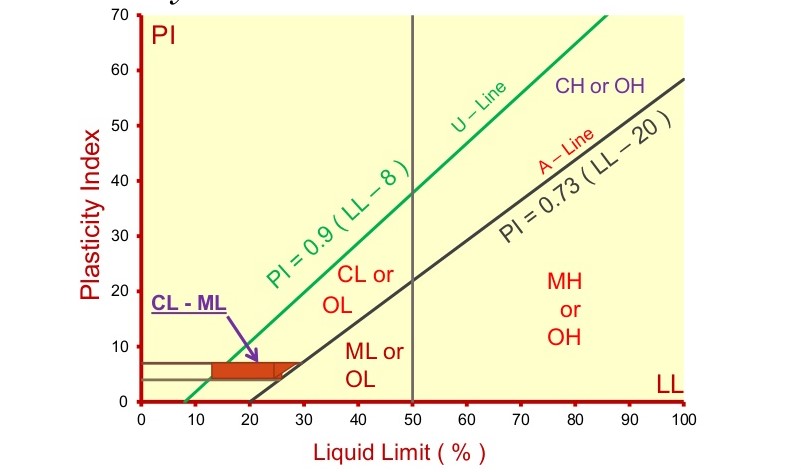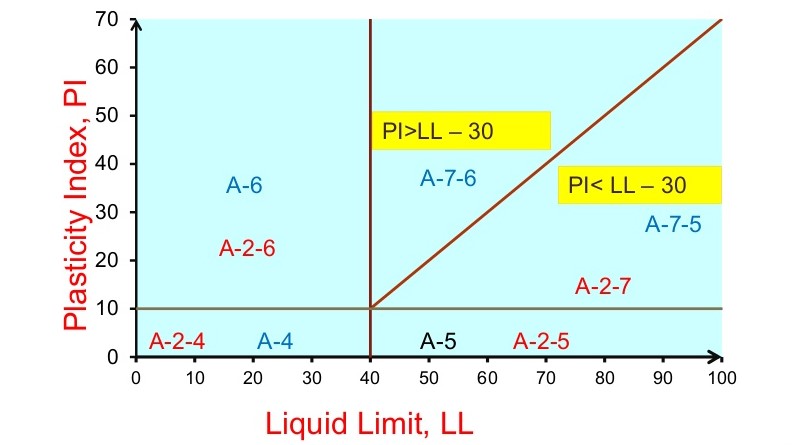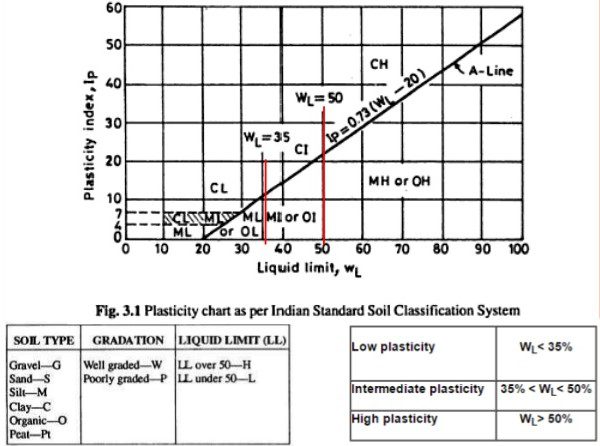Soil classification is a system of different soils based on their application in groups and subgroups with properties similar to their potential engineering behavior, it can be approached from the perspective of soil as a material and soil as a resource.
The classification of soil for engineering purposes should be based primarily on mechanical properties, permeability, hardness and strength.
The purpose of a classification system is to determine a set of different conditions that can allow for helpful comparisons between different soils.
Many of the soil classification systems developed for engineering functions are primarily based on simple index properties such as particle size distribution and plasticity.
Function of soil classification:
- Prepare different types of soil in groups based on your engineering or other different characteristics.
- Soils with similar characteristics could be placed in the identical group.
Soil Classification System:
The Soil Classification is generally primarily based on grain size and soil consistency as follows:
1.Unified Soil Classification System (USCS):

The soil is classed into 15 groups, every group is assigned a symbol consisting of two capital letters.
The first letter is based on the main soil type & second letter is based on gradation and plasticity.
According to USCS, soils are divided into two main categories and the following symbols are used in this system as follows:
Coarse-grained soil classification is gravelly and sandy in nature with lower than 50% passing through the NO 200 sieve (which is F200 <50%).
Coarse-grained:
G — Gravel,
P — poorly graded,
M — Silt,
S — Sand,
W— well graded,
C — Clayey.
Fine-grained soil with 50% or extra passes through the NO. 200 sieve (which is F200> 50%).
Fine-grained soil:
M — Silt,
C — Clay,
0 — Organic,
L — Low Plastic,
H — High Plastic.
According to the present form of this system, soils can be classified according to the eight major groups, A-1 through A-8 based on their grain size distribution, liquid extent, and plasticity indices.
The soil classification in A-1, A-2, and A-3 are coarse-grained materials, group A-4, A-5, A-6, and A-7 are fine-grained materials, while peat, muck, and other highly organic soils are classified under A-8.
They are recognized by visual inspection.
2.AASHTO Soil Classification System:
According to AASHTO, the soil is divided into two main categories:
1. Coarse-grained soil that is gravel and sandy in nature with lower than 35% NO 200 sieve (which is F200 <35%).
2. Fine grained soil with 35% or more sieve. 200 strainer (which is F 200> 35%).

Group Index (GI):
To evaluate the quality of a soil as a highway material, also include a number called group index (GI) along with soil groups and subgroups.
The group index of soil depends on the amount of material passing through the 75 μm IS strainer, the liquid boundary, and the plastic boundary used to describe soil performance when used for pavement construction.
This implies rating the value of the soil as a subgrade material within its group.
The higher the value of GI, the lower the standard of the material, the standard of soil performance as a subgrade material is inversely proportional to the GI.
3.Indian Standard Soil Classification System (ISCS):

It was published in 1959 and revised in 1970.
The amendment is based on the USCS: Fine-Grained soil divided into 3 sub-groups of the low, medium, and medium compression.
The lab classification criterion for coarse grains is similar to USCS & the soil is divided into three broad parts:
Coarse-grained soils: They are divided into 8%- 10% or more of the total parent material by weight placed on a 75 mm IS sieve.
Fine-grained soils: They are divided into 9 primary soil groups- when greater than 50% of the total materials pass through 75 mm IS sieve.
If the soil is extremely organic and comprises a big percentage of organic matter & particles of decomposed vegetation, it is placed in a separate category marked as peat (Pt.).
Totally, 18 groups of soil: coarse-grained soil – 8 groups of fine-grained soil – 9 groups of peat-1 groups.
Also read: Soil Liquefaction, Types of Sand & Soil Cement
Conclusion:
The main function of soil classification is to organize different types of soils into groups according to their engineering or agricultural properties and other characteristics.

Related Posts
Rock Quality Designation(RQD): Building Strong Foundations
Spread Footing
Masonry Cement
Plain Cement Concrete
Concrete Efflorescence
Concrete Pile
Stepped Footing
Fineness Modulus of Coarse Aggregates
Difference between Condo and Apartment